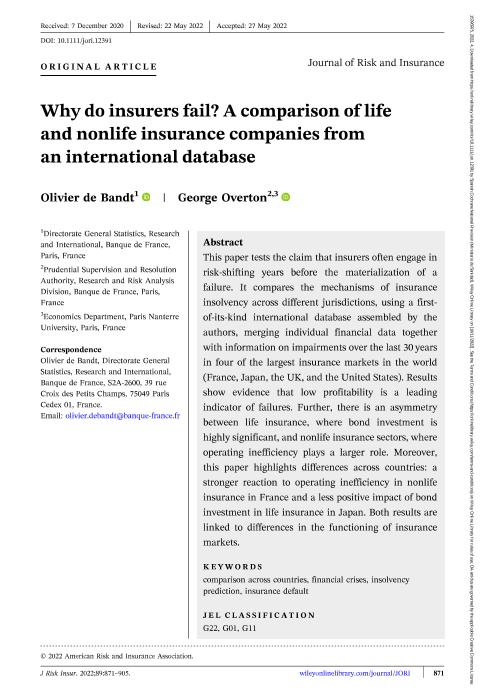| LDR | | | 00000cab a2200000 4500 |
| 001 | | | MAP20220034159 |
| 003 | | | MAP |
| 005 | | | 20221118135604.0 |
| 008 | | | 221118e20221205usa|||p |0|||b|eng d |
| 040 | | | $aMAP$bspa$dMAP |
| 084 | | | $a344.1 |
| 245 | 0 | 0 | $aDo time preferences explain low health insurance take-up?$cAurélien Baillon...[et.al.] |
| 520 | | | $aLow insurance take-up in low-income populations is not easily explained by the standard single-period expected utility model of insurance that overlooks the relevance of time preference when liquidity is constrained. We design field survey instruments to elicit quasi-hyperbolic time preferences, as well as prospect theory risk preferences, and use them to examine whether time preferences explain health insurance behavior of low-income Filipinos. Consistent with theory, those with stronger parameterized time preference are less likely to insure and the partial association is most pronounced at low wealth where liquidity is most likely to be constrained. Among those with better understanding of insurance, lower take-up is also associated with present bias. We do not find that insurance is significantly associated with risk preferences.
|
| 540 | | | $aLa copia digital se distribuye bajo licencia "Attribution 4.0 International (CC BY 4.0)"$f$uhttps://creativecommons.org/licenses/by/4.0$943 |
| 650 | | 4 | $0MAPA20080573867$aSeguro de salud |
| 650 | | 4 | $0MAPA20080586294$aMercado de seguros |
| 650 | | 4 | $0MAPA20080579258$aCálculo actuarial |
| 773 | 0 | | $wMAP20077000727$g05/12/2022 Volumen 89 Número 4 - diciembre 2022 , p. 951-983$x0022-4367$tThe Journal of risk and insurance$dNueva York : The American Risk and Insurance Association, 1964- |
| 856 | | | $qapplication/pdf$w1118200$yRecurso electrónico / Electronic resource |


